What’s in Your Livestock Shed? New calf-rearing unit eases pressure
Rearing calves has historically been one of the toughest jobs for the Williams family, but a new purpose-designed shed has made the whole process healthier for youngstock and more enjoyable for the calf rearers.
Rhys Williams is in charge of calf rearing and farms with his brother, Randall, and father, Phil.
Calves were previously housed in the same building as the milking herd.
However, the sharing of air space had health consequences for the younger, more vulnerable animals.
See also: WIYLS visits a £225,000 calf shed modelled on broiler design
Disease transmission was exacerbated by pens being set up for large groups, so with pressure on both animals and staff, it was time to rethink their setup.
The new housing has been put to the test during the 2023 calving season and has lived up to expectation.
Farm facts: Trebover Farm, Fishguard, Pembrokeshire
- 162ha (400 acres) farmed across two holdings
- 220 mixed breed cows
- Spilt block calving – 1 March and 1 September
- Average yield 6,400 litres
- Paddock grazing
- Milk supplied to First Milk
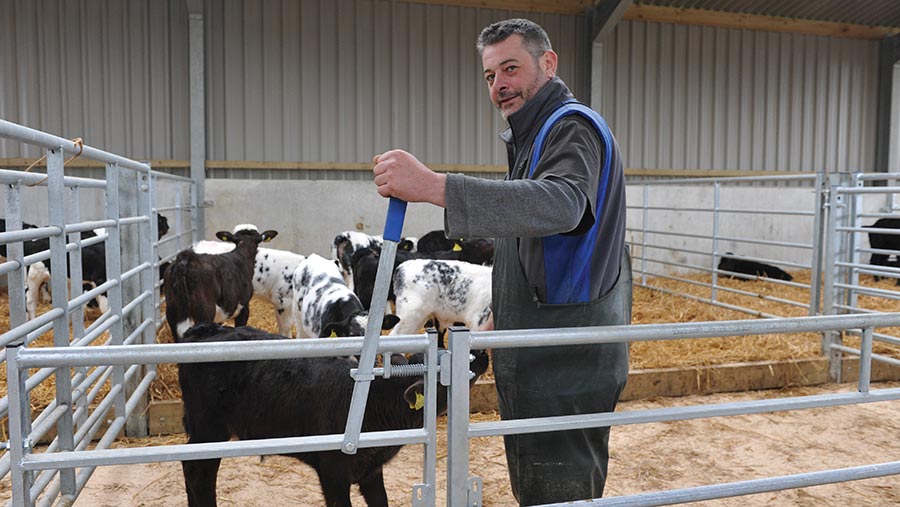
Rhys Williams © Debbie James
How did you design the housing?
We wanted every calf to have plenty of space, so we based our dimensions on 2.5sq m of floor area a calf – the maximum industry guideline figure.
And we needed accommodation for 140 calves.
We gave a lot of thought to where the shed should be positioned on the farm too – a spot where calves could get that first bite of clean air.
It’s a greenfield site in a south-westerly position where there is a good circulation of fresh air, and it is upwind from the cow housing but is protected from the wind.
In our old housing, fresh air had to pass through all the milking cows before it eventually got to the calves.
Because of the new building design (with air gaps and roof ventilation) and its position, we didn’t need to install a dedicated ventilation system.
We can do that retrospectively if needed, but so far everything seems to be OK.
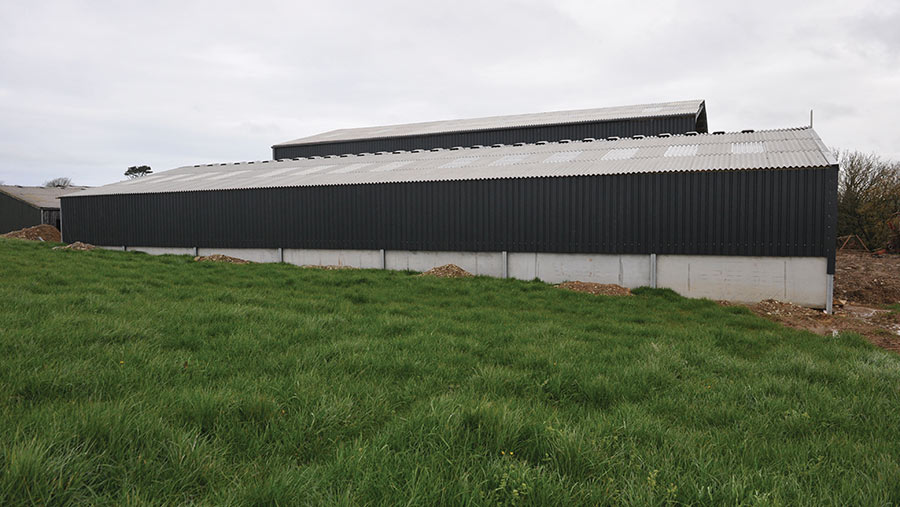
© Debbie James
What were your priorities?
Ease of feeding and management, and ease of cleaning – they were top of our list.
If a job is easier to do, it is more likely to get done.
How have you achieved that?
In the overall design. But what has worked well is having pens of 10 because it is a really manageable number.
Each pen has a teat feeder with 10 separate compartments, so every calf goes to its own feeding section.
This means we can visually monitor each calf to make sure it is getting the right intake of milk.
If one calf is being too greedy and takes milk from another, we move it up to an older group.
Although we try to group calves according to age – we don’t want more than a two-week spread of ages – we also have to take drinking speed into account.
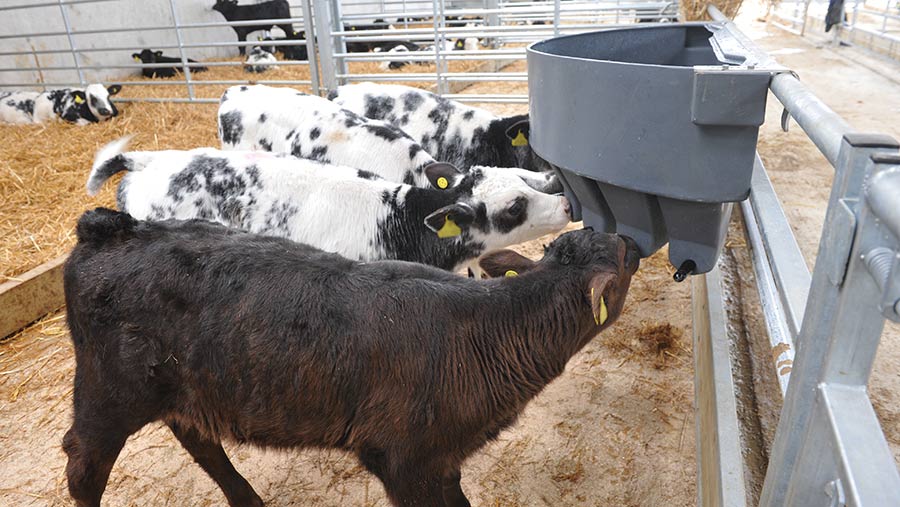
© Debbie James
For ease of management, we have installed lever-operated gates that are usually marketed for sheep pens.
We have a one-in-60 gradient in the concrete floor under the raised bedding area.
This means moisture can run off the straw bedding into the feeding areas, which are covered in sawdust, and into the gulleys outside the pens.
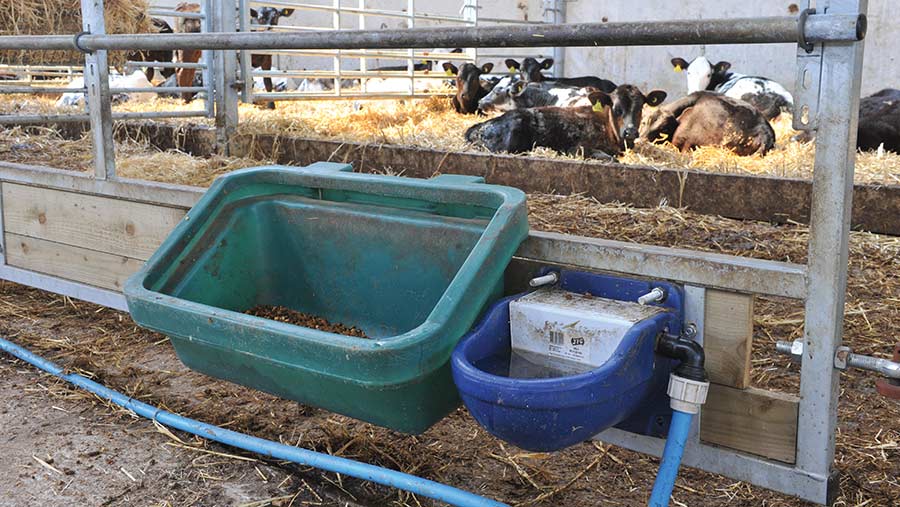
© Debbie James
What was your initial budget and did you stick to it?
We didn’t have a budget as such; we knew what had to be done and we wanted to get it done properly without underspending or overspending.
The shed overall cost us roughly £35,000, including £8,000 on the steelwork for the 14 pens, but with most of the labour done in-house.
How was the shed constructed and by whom?
All steelwork and gateposts were done by a local contractor, Andrew Evans, and we did everything else.
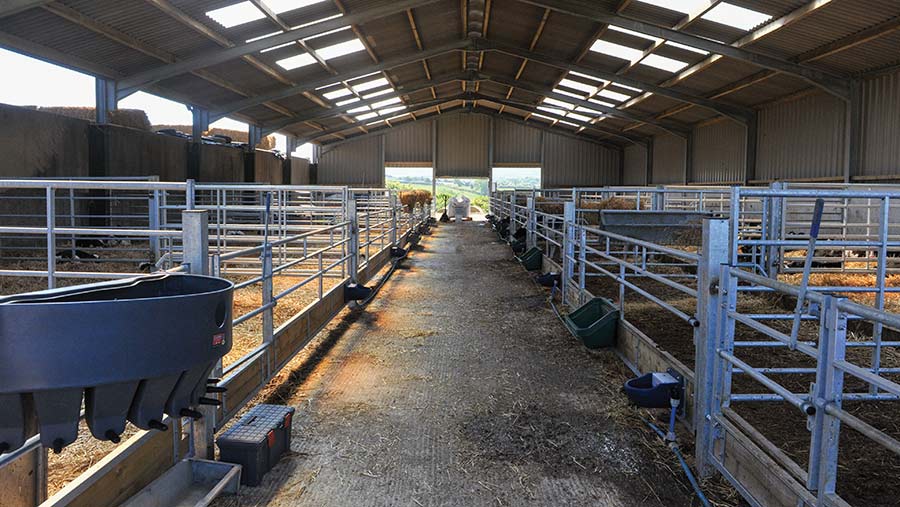
© Debbie James
Tell us about the shed’s specifications
It’s a steel-framed building that has a total floor area of 35×16.7m, with 3.7m to the eaves and with a raised ridge vent.
We have doubled up on perspex roof lights to really maximise the level of sunlight coming into the building.
This is something we have in our poultry shed and had noticed how birds spent a lot of time in those shafts of sunlight, enjoying the warmth.
Having that extra daylight makes everything a little easier: it is a lighter, better environment for us to manage the calves.
In the old calf shed, we had to turn the lights on even when the sun was shining.
Walls are 1.5m high, pre-cast concrete panels topped with solid box profile sheets.
The panels are offset from the side cladding, by around 10cm, to leave a large, horizontal, protected gap that allows air to move over the calves at calf height, before being vented out through the ridge in the roof.
That gap also allows heat, moisture and bugs to be removed, but rain can’t get in.
The gates are 1.1m high. The height had to work for the different area groups, for hooking the feeders over.
We’ve gone for a balance that is at a handy height for older calves and means that younger calves aren’t standing on tiptoes to drink.
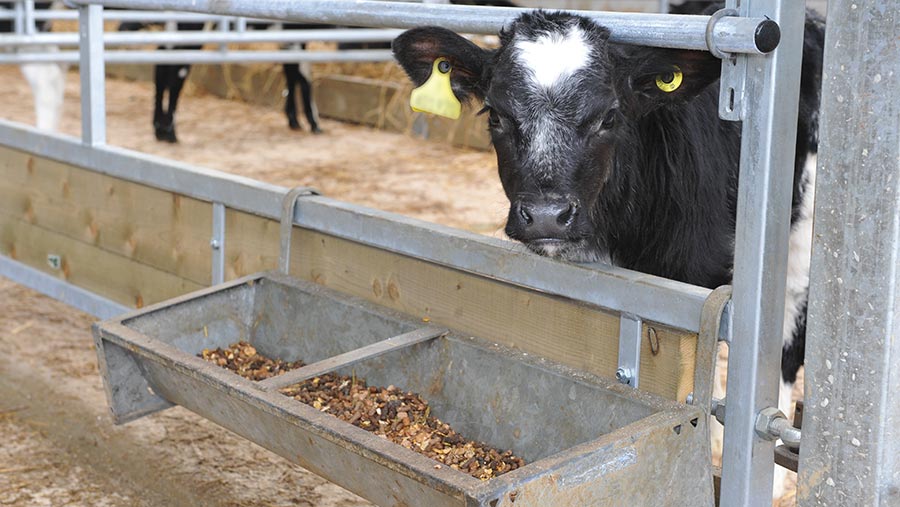
© Debbie James
What’s your favourite feature?
The pen sizes – the fact that we can break down 140 calves into manageable pens of 10.
As with any job, by breaking it down into sections it makes everything easier, and having small groups means we can monitor calves better.
For the older, weaned calves, we can dismantle the partitions between the pens, to run as a group of 20.
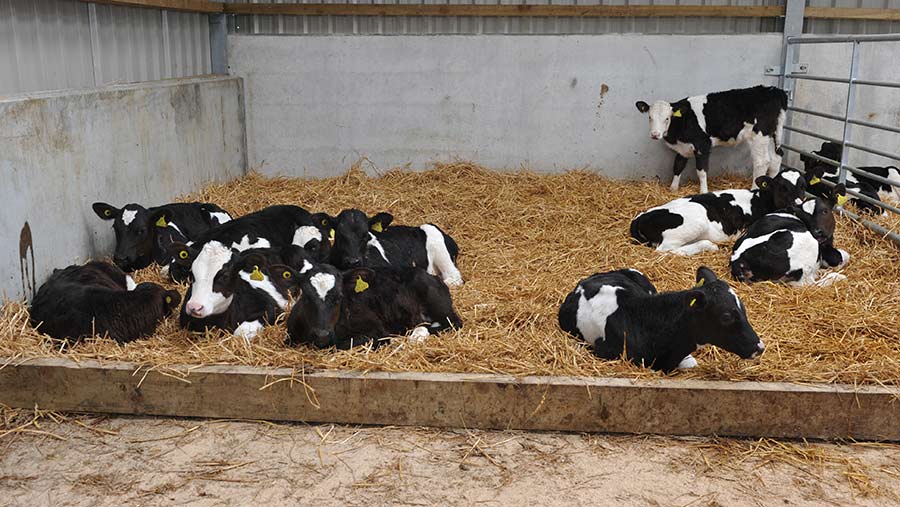
© Debbie James
What’s been your best buy and why?
The metal swing gates and barriers, which are supplied as one system.
They allow for easy and quick access, in and out of the pens, and are at the right height for attaching the multi-teat feeders.
The feeders were a good buy, too. We can allocate calves the correct amount of milk and the divisions reduce any issues with bullying.
When it comes to calf rearing, what couldn’t you live without?
Healthy calves. It is soul-destroying to see calves with pneumonia or scour, and to know that their environment is one of the reasons for that.
Calving has been much more enjoyable this spring with healthy, strong calves that want to eat and are growing well.
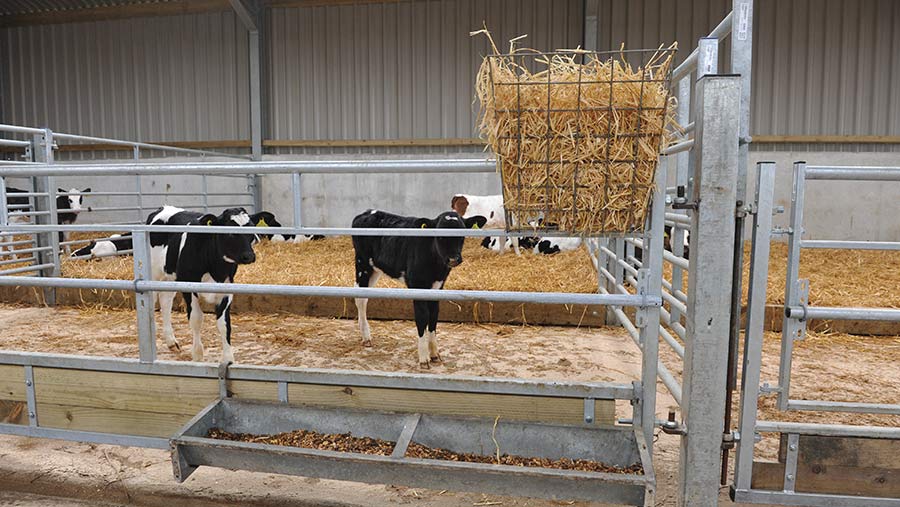
© Debbie James
What would you do differently if you were to build it again?
The drainage channels outside the front of the pens aren’t deep enough, so we are going to make the gutters deeper and fit grilles over the top to catch straw and other material.
Has any particular design aspect helped improve calf performance?
Raising the bedding areas and separating these from where the calves feed.
This stops the build-up of moisture and pathogens and keeps the straw relatively clean and dry.
Calves spend 80% of their time lying down, so it was important that we got that right.
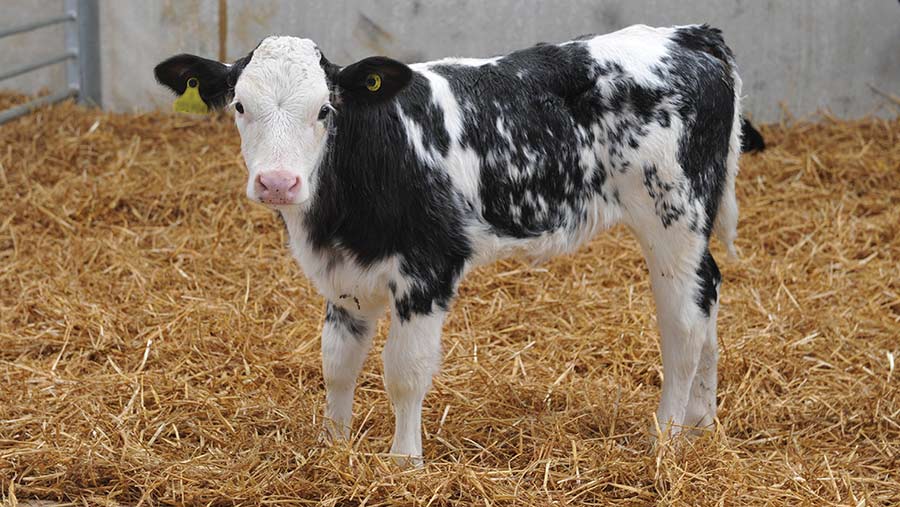
© Debbie James
